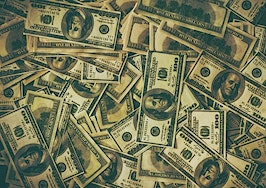Successful investors usually have a gut instinct for what makes a quality investment property. But in 2020, gut instinct isn’t necessarily enough. Data is reshaping the real estate industry as a whole, and individual investors are giving up a potentially huge edge if they don’t approach their investments with an analytical eye.
So how do you start? Ideally, you have an overall process and, within that, you have metrics that help you evaluate potential investments every step of the way. Here are five useful metrics that can reveal — objectively and empirically — if the property you’re looking to buy is actually a good investment.
Cap rate
Cap rate is a great place to start. Not only does it help you evaluate individual properties in a vacuum, it’s also an easy way to compare different properties.
So what’s a cap rate? Simply put, it’s an estimate of the return you can expect from a given investment. If you’re buying, you want to aim for a high cap rate. If you’re selling, you’ll want a low cap rate. The cap rate is expressed as a percentage, and it’s calculated like this:
Property cap rate = Net operating income / Current market value
Net operating income (NOI) is simply the revenue from the property, minus operating expenses. (Note that operating expenses don’t include any debt services.)
Let’s look at an example. Let’s say you’re looking at a property valued at $500,000, with a NOI of $40,000. Dividing $40,000 by $500,000 gets you a cap rate of 8 percent, which is a very healthy return. On the other hand, if the NOI was only $20,000, you’d get a cap rate, or a projected return on investment, of only 4 percent. For that kind of return, there are much safer places to park your money.
In an interesting twist, you can also use the market cap rate (which is a more general cap rate based on the present market rates for a class or type of property) to find the “true” market value of a property, simply by multiplying it by the projected NOI.
Using the same numbers from above, let’s say you’re looking at a property with a NOI of $40,000, that has a market cap rate of 8 percent. That means the “true” market value of the property is $500,000. If it’s priced significantly higher than that, it might not be the savviest investment. If it’s priced lower, you should pounce.
Cash flow
If the cap rate looks good, it’s time to dig a little deeper. This means looking at cash flow. Cap rate is a great metric, but it can be a little abstract. Cash flow will tell you, well, how much cold, hard cash you can expect from your investment.
Cash flow is calculated like this:
Cash flow = NOI – Capital expenses and debt service
When you buy investment properties, previous owners will usually open their books for you, so you can get a look at their previous year of cash flow. Just make sure you don’t make the novice mistake of assuming your future cash flow will be the same as the previous owner’s cash flow.
What accounts for differences? A big one is debt service. After all, as a new owner, you may get different terms on your financing than the previous owner. Capital expenses can be deceiving, too. The previous owner may not have been performing routine maintenance, which can have a double effect. First, their capital expenses were artificially low. Second, if they were neglecting, say, the heating system, and it blows up after you take ownership, you’re going to have to lay out a huge amount of cash.
When you look at a property’s cash flow, make sure you calculate it using specific, personalized numbers, rather than just extrapolating it from the previous owner’s books. Many experts suggest aiming for a cash flow of $250 per rental unit, but the right number often depends on your local market.
Cash-on-cash return
If your prospective investment passes the cap-rate test, and projects to generate a healthy cash flow, you can start tightening your focus even more.
Cash-on-cash return (COC) goes deeper than a standard return on investment (ROI). Instead of just calculating a generic overall return, it looks at the return you’ll get for the actual cash you invest. You calculate COC by looking at the ratio of annual pre-tax cash flow to the amount of money you’ve already put down. Sound complicated? Let’s look at a real example.
Let’s say you buy a $400,000 property, put $105,000 down, and borrow $315,000. You have closing costs of $9,000, and rehab costs of $60,000, which brings the value of the property up to $700,000. In total, you put up $174,000 in cash upfront. Over the course of the year, you make $20,000 in mortgage repayments and have a positive monthly cash flow of $1,750. Using those figures, your COC is a very healthy 12 percent.
COC is so valuable because it lets you compare property investments to other investments, like stocks, on a real dollar-to-dollar basis. At the same time, if your investment strategy prioritizes negative cash flow, for tax purposes, COC is your best bet to find the kind of properties you require.
Vacancy loss
As you saw in the previous sections, everything starts with an accurate estimate of your income. For rental investors, this means not making the common mistake of overestimating your rents. After all, if you have 20 rental units, all 20 (probably) won’t be rented all 12 months of the year. If you project your cash flow on the assumption that they will be, you could be facing some serious shortfalls at the end of the year. A properly calculated vacancy loss helps prevent that.
First, you find out your vacancy rate. The average vacancy rate is between 5-8 percent, but you’ll want to come up with a precise local figure. There are a few ways to do this. You can consult local experts like real estate agents or landlords. You can also consult the U.S. Census, which lists vacancy rates for all 50 states and 75 metro areas. Lastly, you can use the records provided to you by the previous owner and divide the number of vacant units by the total number of units.
Once you have your vacancy rate, you can calculate your annual vacancy loss by multiplying the vacancy rate by your total gross income. If your annual total gross income from your rentals is $20,000, and you have a vacancy rate of 5 percent, your vacancy loss is $1,000.
On top of that, make sure you take leasing fees into account. If you’re going to use professional management, they typically charge a leasing fee equivalent to one month’s rent when they have to find a new tenant. That’s on top of the rent you’re losing out on.
Luke Babich is the CSO of Clever Real Estate in St. Louis. Connect with him on Facebook or Twitter.
Ben Mizes is the CEO of Clever Real Estate in St. Louis. Connect with him on Facebook or Twitter.








